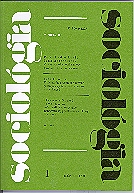Súčasné dimenzie sociálno-demografickej priestorovej štruktúry Bratislavy
Social-demographic Spatial Structure of Bratislava: Current Dimensions
Author(s): Pavol Korec, Slavomír OndošSubject(s): Social Sciences
Published by: SAV - Slovenská akadémia vied - Sociologický ústav
Keywords: Social-demographic spatial structure; factorial ecology; housing areas; regional types; Bratislava
Summary/Abstract: Social-demographic Spatial Structure of Bratislava: Current Dimensions. Urban population heterogeneities belong to the most visible features among intra-urban structures. Differentiations in demographic, social and economic dimension find reflections in the behavioural differences, inequality in usage and movement in urban space. Clearer wealth disparities begin at various income sources and end at various consumption possibilities. Post-socialist period has transformed the city in all of its structures both directly and indirectly. Social-demographic aspect is the least stable of all recognized in urban geography. Housing areas are functional urban spaces that incorporate some of the population characteristics represented in a heterogeneously patterned system. Traditional exploratory approach to social-demographic spatial structure is built upon methods of social-ecology. Twenty-one years after its first application we use similar approach for the city of Bratislava. Aimed at hidden complex patterns, factorial ecology uncovers core of current social-demographic structures analysing the transformation of selected 2001 census data on population and housing. Factor analysis defines five factors, labelled and interpreted as basic dimensions of spatial structure: family status, social-professional status, housing status, reproduction status and economic activity status. Six clusters have been identified upon these data, spatially interpreted as regional types of social-demographic spatial structure: population types situated above socio-economic average located in centre of the city and differentiated into villa localities and the old centre in advanced life-cycle phase; housing estate types differentiated by life-cycle phase; periphery with autochthonous residents and suburban immigrants in the same category.
Journal: Sociológia - Slovak Sociological Review
- Issue Year: 2006
- Issue No: 1
- Page Range: 49-82
- Page Count: 34
- Language: Slovak

